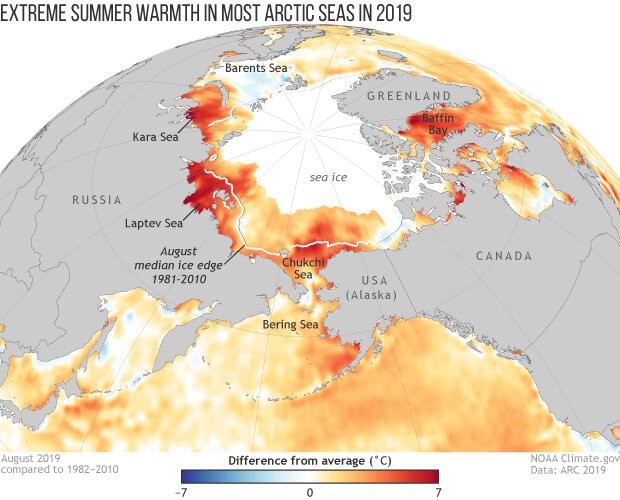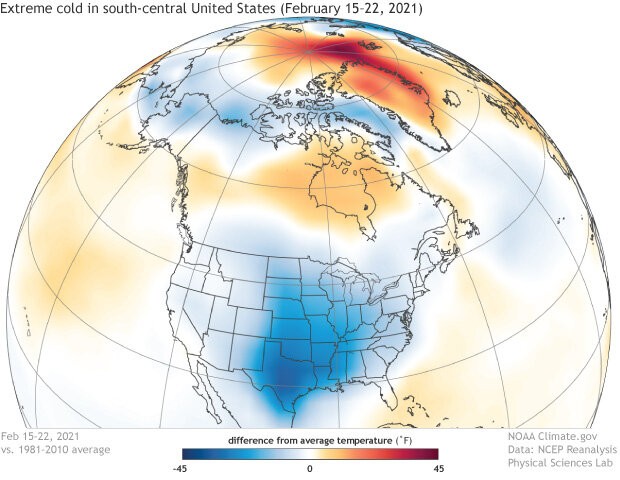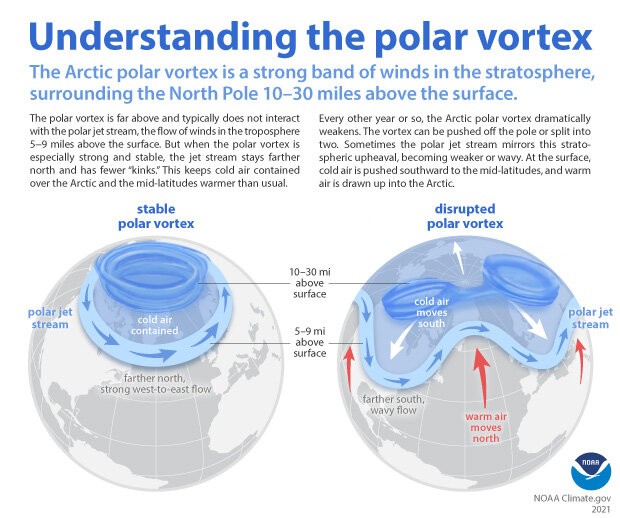Are you planning a trip to Vietnam and wondering, “Should I Bring Layers Even In Warmer Months Due To Altitude Changes?” Absolutely! While Vietnam is known for its tropical climate, especially in destinations like Hanoi, altitude variations can significantly impact the temperature. SIXT.VN understands the importance of being prepared for any weather conditions. Bringing layers ensures you stay comfortable throughout your journey, whether you’re exploring bustling city streets or ascending to cooler mountainous regions. Pack light clothing, a waterproof jacket, and a warm sweater to fully enjoy your Vietnamese adventure. This approach guarantees a pleasant experience regardless of weather fluctuations. Don’t forget that adaptability is key when considering climate variability and unforeseen weather changes.
1. Understanding Vietnam’s Climate: A Traveler’s Guide
1.1. Overview of Vietnam’s Diverse Weather Patterns
Vietnam’s climate is incredibly diverse, varying significantly from north to south and influenced by altitude. The northern region, including Hanoi, experiences four distinct seasons: a cool, dry winter (November to April), a hot, humid summer (May to August), and transitional spring and autumn periods. Central Vietnam has a tropical monsoon climate with high humidity and heavy rainfall, particularly during the typhoon season (September to December). Southern Vietnam enjoys a consistently warm, tropical climate year-round, with a dry season (December to April) and a wet season (May to November). According to the Vietnam National Administration of Tourism, understanding these regional differences is crucial for planning your trip and packing appropriately.
1.2. Seasonal Variations: What to Expect Across Vietnam
- Northern Vietnam (Hanoi):
- Winter (November to April): Temperatures can drop to 10-15°C (50-59°F), especially in the northern mountains. Expect dry conditions with occasional drizzle.
- Spring (February to April): Mild temperatures ranging from 20-25°C (68-77°F). Increased humidity and occasional showers.
- Summer (May to August): Hot and humid with temperatures often exceeding 30°C (86°F). Expect frequent rain showers and thunderstorms.
- Autumn (September to November): Considered the best time to visit, with pleasant temperatures around 25-28°C (77-82°F) and lower humidity.
- Central Vietnam (Da Nang, Hue):
- Dry Season (March to August): Hot and dry with temperatures ranging from 30-35°C (86-95°F).
- Wet Season (September to December): Heavy rainfall and potential typhoons. Temperatures are still warm, around 25-30°C (77-86°F).
- Southern Vietnam (Ho Chi Minh City):
- Dry Season (December to April): Warm and dry with temperatures ranging from 27-35°C (81-95°F).
- Wet Season (May to November): High humidity and frequent afternoon showers. Temperatures remain warm, around 25-32°C (77-90°F).
1.3. Microclimates: How Altitude Affects Temperature
Altitude plays a significant role in shaping Vietnam’s microclimates. As you ascend into mountainous regions like Sapa, Dalat, or the Central Highlands, temperatures can drop dramatically compared to the lowlands. In Sapa, located in northern Vietnam, temperatures can fall below freezing in winter, while Dalat, in the Central Highlands, maintains a cool, temperate climate year-round. These variations mean that even during warmer months, bringing layers is essential for comfort and safety.
1.4. Real-World Example of Temperature Variation
A real-world example can illustrate the importance of layering. Imagine traveling from Hanoi to Sapa in April. In Hanoi, the temperature might be a pleasant 25°C (77°F). However, as you travel to Sapa, which is approximately 1,500 meters (4,921 feet) above sea level, the temperature can drop to 15°C (59°F) or even lower, especially in the evenings. Without appropriate layers, you might find yourself uncomfortably cold, impacting your enjoyment of the trip.
 Sapa Mountain View
Sapa Mountain View
Panoramic view of Sapa mountains in Vietnam, showcasing the landscape where weather can change drastically due to altitude.
2. The Importance of Layering: Practical Advice for Travelers
2.1. What is Layering and Why is it Effective?
Layering is a clothing strategy that involves wearing multiple layers of garments that can be added or removed depending on the temperature and activity level. This approach is highly effective because it allows you to regulate your body temperature easily, adapting to changing conditions. Each layer serves a specific purpose:
- Base Layer: Worn closest to the skin, the base layer’s primary function is to wick away moisture, keeping you dry and comfortable.
- Mid Layer: This layer provides insulation, trapping warm air and preventing heat loss.
- Outer Layer: The outer layer protects you from the elements, such as wind, rain, and snow.
2.2. Base Layers: Choosing the Right Fabrics
The base layer is crucial for managing moisture and maintaining comfort. Ideal fabrics for base layers include:
- Merino Wool: Known for its excellent wicking properties, natural odor resistance, and warmth even when wet.
- Synthetic Fabrics (Polyester, Nylon): These fabrics are lightweight, quick-drying, and effective at wicking away moisture.
- Silk: A good option for warmer conditions, silk is lightweight, breathable, and comfortable against the skin.
Avoid cotton for base layers, as it retains moisture and can leave you feeling cold and clammy.
2.3. Mid Layers: Insulation Options
The mid-layer provides insulation, trapping warm air to keep you comfortable in cooler conditions. Popular choices for mid-layers include:
- Fleece: Lightweight, warm, and quick-drying, fleece is an excellent all-around option.
- Down: Provides exceptional warmth for its weight, down is best suited for cold, dry conditions.
- Synthetic Insulation: Alternatives like PrimaLoft offer good warmth-to-weight ratio and perform well in wet conditions.
2.4. Outer Layers: Protection from the Elements
The outer layer is your shield against wind, rain, and snow. Key features to look for in an outer layer include:
- Waterproof and Breathable Fabrics: Materials like Gore-Tex provide excellent water protection while allowing moisture vapor to escape, preventing overheating.
- Wind Resistance: A windproof outer layer can significantly improve warmth and comfort in windy conditions.
- Adjustable Features: Look for adjustable hoods, cuffs, and hems to customize the fit and seal out the elements.
2.5. Layering Strategies for Different Activities
- Hiking: A moisture-wicking base layer, a fleece or down mid-layer, and a waterproof, breathable outer layer are ideal for hiking in varied conditions.
- City Exploring: A lightweight base layer, a sweater or fleece mid-layer, and a packable rain jacket can provide comfort and protection while exploring urban environments.
- Motorbiking: A windproof and waterproof outer layer is essential for motorbiking, along with insulating layers to combat wind chill.
2.6. Practical Examples of Layering in Vietnam
Imagine you’re planning a trip to Hanoi in March, a transitional month with unpredictable weather. You could start with a merino wool base layer to keep you comfortable throughout the day. Add a fleece jacket for extra warmth during cooler mornings and evenings. Pack a lightweight, waterproof jacket to protect against occasional rain showers. This layering system allows you to adapt to changing conditions without carrying bulky, unnecessary clothing.
 Woman Layering Clothes
Woman Layering Clothes
A woman layering clothes, demonstrating practical dressing for varying weather conditions during travel.
3. Packing Essentials for Vietnam: Beyond Clothing Layers
3.1. Comprehensive Packing List for Vietnam
In addition to clothing layers, several other items are essential for a comfortable and safe trip to Vietnam:
- Clothing:
- Moisture-wicking t-shirts
- Lightweight long-sleeved shirts
- Comfortable pants or shorts
- Swimsuit (for beach destinations)
- Underwear and socks
- Comfortable walking shoes
- Sandals or flip-flops
- Accessories:
- Wide-brimmed hat
- Sunglasses
- Sunscreen
- Insect repellent
- Small backpack or daypack
- Reusable water bottle
- Personal Items:
- Toiletries (travel-sized)
- Medications (with prescriptions)
- First-aid kit
- Hand sanitizer
- Wet wipes
- Travel towel
- Documents:
- Passport and visa
- Copies of important documents
- Travel insurance information
- Flight and accommodation confirmations
- Electronics:
- Smartphone and charger
- Portable power bank
- Universal adapter
- Camera
- E-reader or books
3.2. Choosing the Right Luggage: Suitcase vs. Backpack
The choice between a suitcase and a backpack depends on your travel style and itinerary. Suitcases are ideal for travelers who prefer organized packing and easy access to their belongings, especially if they plan to stay in hotels and use transportation services like taxis or private cars. Backpacks are better suited for adventurous travelers who plan to move frequently, use public transportation, or hike in mountainous areas.
3.3. Footwear Considerations: Comfort and Protection
Comfortable footwear is essential for exploring Vietnam, as you’ll likely be doing a lot of walking. Choose sturdy walking shoes with good support and traction. Sandals or flip-flops are useful for warmer weather and beach destinations. If you plan to hike, invest in hiking boots with ankle support and waterproof protection.
3.4. Health and Safety Items: Preparing for Unexpected Situations
Pack a comprehensive first-aid kit with essentials like bandages, antiseptic wipes, pain relievers, and diarrhea medication. Consult your doctor about necessary vaccinations and malaria prophylaxis. Insect repellent is crucial for protecting against mosquito-borne diseases like dengue fever and Zika virus.
3.5. Adapting to Local Customs: Respectful Attire
When visiting temples and other religious sites, dress respectfully by covering your shoulders and knees. Lightweight, modest clothing is ideal for these occasions. Remove your shoes before entering temples and pagodas.
3.6. Useful Gadgets and Accessories for Vietnam
A portable power bank is essential for keeping your devices charged on the go. A universal adapter ensures you can plug in your electronics regardless of the local electrical outlets. A small padlock can secure your luggage in hostels or on overnight trains.
3.7. Real-World Packing Scenario
Let’s say you’re planning a two-week trip to Vietnam, starting in Hanoi, then traveling to Ha Long Bay, and ending in Ho Chi Minh City. For Hanoi, pack layers to adapt to the variable weather. Include a mix of lightweight and warm clothing, a waterproof jacket, and comfortable walking shoes. For Ha Long Bay, bring swimwear, sunscreen, and a hat for sun protection. For Ho Chi Minh City, pack lightweight, breathable clothing for the warm, tropical climate. A versatile packing list ensures you’re prepared for any situation.
 Vietnam Packing Essentials
Vietnam Packing Essentials
A set of essential items for packing, including clothing, accessories, and travel documents, demonstrating preparedness for a trip to Vietnam.
4. Key Destinations and Climate Considerations in Vietnam
4.1. Hanoi: Weather Patterns and Seasonal Packing Advice
Hanoi experiences four distinct seasons, each requiring different clothing:
- Winter (November to April): Pack warm layers, including a jacket, sweater, and scarf. Temperatures can drop to 10-15°C (50-59°F).
- Spring (February to April): Mild temperatures, but pack a light jacket for cooler evenings and occasional rain.
- Summer (May to August): Hot and humid, so pack lightweight, breathable clothing. Rain is common, so bring a rain jacket or umbrella.
- Autumn (September to November): Pleasant temperatures, but pack a light jacket for cooler evenings.
4.2. Ha Long Bay: Coastal Climate and What to Wear
Ha Long Bay has a humid, subtropical climate with warm summers and mild winters. Pack:
- Summer (May to September): Lightweight, breathable clothing, swimwear, sunscreen, and a hat.
- Winter (November to March): Layers, including a light jacket or sweater, as temperatures can drop.
4.3. Sapa: Mountainous Region and Temperature Fluctuations
Sapa’s mountainous location results in significant temperature fluctuations. Pack:
- Year-Round: Layers are essential, including a warm jacket, sweater, and waterproof outer layer.
- Winter (December to February): Temperatures can drop below freezing, so pack warm clothing, including thermal underwear, gloves, and a hat.
4.4. Da Nang: Central Coast Weather and Packing Tips
Da Nang has a tropical monsoon climate. Pack:
- Dry Season (March to August): Lightweight, breathable clothing, swimwear, sunscreen, and a hat.
- Wet Season (September to December): Rain gear, including a waterproof jacket or umbrella, as heavy rainfall is common.
4.5. Ho Chi Minh City: Tropical Climate and Essential Clothing
Ho Chi Minh City has a consistently warm, tropical climate year-round. Pack:
- Year-Round: Lightweight, breathable clothing, such as cotton or linen.
- Wet Season (May to November): A light rain jacket or umbrella for afternoon showers.
4.6. Other Notable Destinations: Dalat, Phu Quoc, and More
- Dalat: Known for its cool, temperate climate. Pack layers, including a light jacket or sweater.
- Phu Quoc: A tropical island with warm weather year-round. Pack lightweight, breathable clothing, swimwear, sunscreen, and a hat.
4.7. Altitude Sickness Awareness and Prevention
If you plan to visit high-altitude destinations like Sapa or Dalat, be aware of altitude sickness. Symptoms include headache, nausea, and fatigue. Prevent altitude sickness by:
- Ascending gradually
- Staying hydrated
- Avoiding alcohol and caffeine
- Eating light meals
- Consulting your doctor about medication
 Vietnam Climate Map
Vietnam Climate Map
A climate map of Vietnam, highlighting the various weather patterns and climates across different regions of the country.
5. Enhance Your Vietnam Trip with SIXT.VN Services
5.1. SIXT.VN: Your Travel Partner in Vietnam
SIXT.VN offers a range of services to make your trip to Vietnam seamless and enjoyable. Our services include:
- Airport Transfers: Start your trip stress-free with our reliable airport transfer services.
- Hotel Booking: Choose from a wide selection of hotels to suit your budget and preferences.
- Tours: Explore Vietnam’s top attractions with our guided tours.
- Flight Booking: Find the best deals on flights to and from Vietnam.
- Travel Consultation: Get personalized travel advice from our expert team.
5.2. Airport Transfer Services: Convenience and Reliability
Our airport transfer services ensure you arrive at your destination safely and comfortably. We offer a range of vehicles to suit your needs, from private cars to minivans for larger groups.
5.3. Hotel Booking: Find the Perfect Accommodation
SIXT.VN partners with top hotels across Vietnam to offer you a wide selection of accommodation options. Whether you’re looking for a luxury resort or a budget-friendly guesthouse, we have something for everyone.
5.4. Guided Tours: Explore Vietnam’s Hidden Gems
Our guided tours take you to Vietnam’s most iconic landmarks and hidden gems. Our experienced guides provide valuable insights and ensure you have a memorable experience.
5.5. Flight Booking: Seamless Travel Arrangements
Find the best deals on flights to and from Vietnam with our flight booking service. We partner with major airlines to offer you a range of options to suit your budget and schedule.
5.6. Travel Consultation: Personalized Itinerary Planning
Our travel experts can help you plan the perfect itinerary for your trip to Vietnam. We offer personalized advice on destinations, activities, and accommodation.
5.7. Benefits of Using SIXT.VN Services
- Convenience: Book all your travel needs in one place.
- Reliability: Trust our experienced team to provide top-notch service.
- Competitive Pricing: Find the best deals on flights, hotels, and tours.
- Personalized Service: Get tailored advice and support from our travel experts.
5.8. How to Book with SIXT.VN
Booking with SIXT.VN is easy. Simply visit our website or contact our customer service team to get started.
- Website: SIXT.VN
- Hotline/WhatsApp: +84 986 244 358
- Address: 260 Cau Giay, Hanoi, Vietnam
 Sapa Mountain View
Sapa Mountain View
A visual representation of SIXT.VN’s services, showcasing hotel booking, airport transfers, and guided tours for travelers in Vietnam.
6. Addressing Common Concerns and FAQs
6.1. Should I Bring Layers Even In Warmer Months Due To Altitude Changes?
Yes, bringing layers is highly recommended even in warmer months due to significant altitude changes in regions like Sapa and Dalat.
6.2. What Type of Clothing is Best for Vietnam’s Climate?
Lightweight, breathable fabrics like cotton and linen are ideal for most of Vietnam. Layers are essential for adapting to temperature variations.
6.3. How Can I Protect Myself from Mosquitoes in Vietnam?
Use insect repellent, wear long sleeves and pants in the evening, and stay in accommodations with mosquito nets or screens.
6.4. Is It Safe to Drink Tap Water in Vietnam?
No, it’s not safe to drink tap water in Vietnam. Drink bottled water or use a water filter.
6.5. What Vaccinations Do I Need for Vietnam?
Consult your doctor about recommended vaccinations, such as hepatitis A and typhoid.
6.6. How Do I Get Around in Vietnam?
Popular transportation options include taxis, buses, trains, and motorbikes. Consider using ride-hailing apps for convenience.
6.7. What is the Best Time to Visit Vietnam?
The best time to visit Vietnam depends on the region. Generally, the dry season (December to April) is ideal for most of the country.
6.8. How Much Spending Money Do I Need for Vietnam?
Budget travelers can spend around $30-$50 per day, while mid-range travelers can expect to spend $75-$150 per day.
6.9. What are Some Must-Visit Destinations in Vietnam?
Popular destinations include Hanoi, Ha Long Bay, Sapa, Hoi An, and Ho Chi Minh City.
6.10. How Can SIXT.VN Help Me Plan My Trip?
SIXT.VN offers airport transfers, hotel booking, tours, and travel consultation services to make your trip seamless and enjoyable.
7. Conclusion: Embrace the Journey with Confidence
7.1. Recap of the Importance of Layering for Vietnam Travel
Layering is crucial for staying comfortable in Vietnam’s diverse climate, particularly due to altitude changes. Packing layers ensures you’re prepared for any weather conditions, from warm coastal areas to cool mountain regions.
7.2. How SIXT.VN Can Enhance Your Travel Experience
SIXT.VN offers a range of services, including airport transfers, hotel booking, tours, and travel consultation, to make your trip seamless and enjoyable.
7.3. Final Thoughts on Planning a Successful Trip to Vietnam
Planning a successful trip to Vietnam involves understanding the climate, packing appropriately, and utilizing reliable travel services. With careful preparation and the support of SIXT.VN, you can embrace the journey with confidence and create lasting memories.
Ready to experience the best of Vietnam? Let SIXT.VN take care of your travel needs. Contact us today to book your airport transfer, hotel, tour, or travel consultation. Visit SIXT.VN or call +84 986 244 358 to get started!
 Vietnam Packing Essentials
Vietnam Packing Essentials
A scenic view of the Vietnamese landscape, symbolizing the adventure and travel opportunities in Vietnam.



